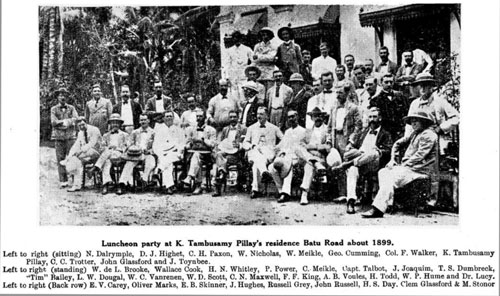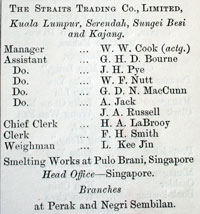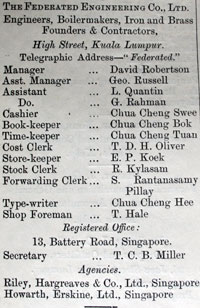
For the descendents of Richard Dearie and his son John Russell

John Russell (Jack)
16 January 1855 -17 December 1930
Printer, Compositor and Writer
Compiled by Claire Grey with information from Peter Clague's book and from Agnes and Cecil Rough.
John Russell, also known as Jack or "Fuzzy", was born on 16 January 1855, at 115, Nichols Square, Shoreditch, London.
On his birth certificate his father’s name was given as John William Russell, foreign commission agent, and his mother as Jessie Russell, formerly Smart. The informant was his mother Jessie, she registered the birth on 29th January.
Research has found no trace of William Russell or any record of a William Russell marrying a Jessie Smart. Family myth and a DNA test in 2007 all point to his father being Richard Dearie. The ratepayer at Jack's birthplace was Richard Dearie; and Jack later named his son George Dearie Russell. Richard Dearie is recorded as being a "commission agent" in a street directory of 1848.
Family history relates that the beautiful and intelligent Elizabeth Hogg ran off with a sailor with whom she had a child called Jessie. Abandoned by the sailor Elizabeth married Richard Dearie when Jessie was 3. Jessie was brought up with Richard and Elizabeth's other children. She was 22 when she gave birth to Jack. Her step father Richard was the father of her child. She took the name Mrs. Russell.
It is not known if she stayed with Richard and her mother while Jack was young. It might have been an economic necessity. She might have gone to live with some relatives. Her half sister Annie was removed from the family home to her Aunt Rough’s household after Jessie became pregnant. Jessie’s other three half sisters Bessie, Maria and Mary stayed with their father.
Richard divided his time between his three pubs in Glasgow, a house in Rose Street Glasgow and a house at number 2 Murray Street, Hackney in London. All these addresses are mentioned after he was fined for running an illicit still in Glasgow in March 1856. For the first years of Jack’s life his father was in debtor’s prison, and was not relieved of his debts until 1857.
A directory for London for 1860 records a lodging house at 2 Chapel Street West in Mayfair as being run by a Richard Dearie, but passenger lists show him as returning to America in August 1859. Jack was 4 when Richard had left the country with children Mary and Bessie and returned to his life in New York. Richard appears to have settled there since he is recorded as paying taxes in New York in 1865 and 1866. Richard had abandoned some of his many children to the care of others on at least two previous occasions so this is not unusual behaviour.
2 Chapel Street West is recorded as being run by a Mrs. Russell from 1864-72 in later directories. Family myth records Jessie earning her living running a hotel. Russell is a common name and the census for 1861 and 1871 for this area are lost, so this may or may not be Jessie. Perhaps Jack lived here from about the ages of 5 to 14.
Jack’s illegitimacy and that of his mother does not seem to have cut him off from his wider family. He was accepted by his mother’s brothers and sisters, and by his own half brothers and sisters, although unsurprisingly his father was not.
In later life Jack would talk about his mother who he called Elizabeth but never about his father. Perhaps he never met him?
We don't know where Jack went to school. School attendance was not compulsory till 1876 when he was 21, perhaps his teacher relations educated him, perhaps he went to a local church school.
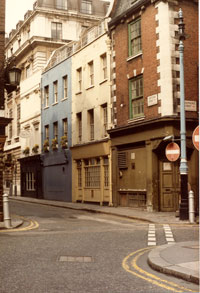
Working Life
On 5th October,1869, when he was 14, the records of the Stationer's Company show he was apprenticed as a compositor to George Andrew Spottiswode of New Street Square, Printer for 7 years. –“ no money”
He would complete his apprenticeship by the age of 21 in 1876
New Street Square was near Shoe Lane north of Fleet Street and until very recently was still at the heart of London’s printing industry. (1)
Jack was born in the middle of Queen Victoria's reign, when nearly a quarter of the world's population belonged to the British Empire. The Crimean war had just ended and it was a time of comparative peace abroad. At home, however, there was enormous social change, with riots taking place over the franchise, which was only extended to workingmen in towns when Jack was 12. It was the London of Charles Dickens and if you survived a cholera epidemic, and you weren't poor it was an exciting time to grow up.
Many inventions were made or brought into wider use during his youth including iron steamships, typewriters, the telephone, phonograph, and bicycle. Also new machines for composing printers type which brought down the cost of newspapers, just at the time when compulsory schooling meant that more people could read them.
After completing his apprenticeship in 1876 he worked for 13 years in Fleet Street. He is supposed to have worked for the London Illustrated Journal. No publication of this name can be found. It may have been the Illustrated London News. (2) Spottiswode was involved with the Illustrated London News’ rival paper The Pictorial Times. There was also The Illustrated Times, and the other rival paper with pictures, The Graphic.
Jack refers to this time in an article he wrote later in the Selangor Journal in July 1895. Noting the beauty of the view from his veranda in the highest house in Kuala Lumpur; “I have noted the break of day and watched the sun heralding its approach by suffusing the sky with glorious indescribable colours- colours which before leaving the dull atmosphere of London, I had imagined only to belong to the chrome lithographs exhibited in Strand shop windows or to mountains depicted in German oleographs".
Marriage and Children
Stories say that Jack met his future wife Frances Webster when he was a lodger at her parents' house. Her father Walter Webster was a clerk and her uncle George a reporter. It is thought they lived in Clerkenwell.
Agnes and Cecil Rough interviewed in 1985 said that Jack and Frances first son was called Francis Webster and that he was put in a foundling’s home. (Cecil later met a Frank Webster who worked for BOC and said he looked like the Russells, like George. He took Cecil out a couple of times.) Webster is a common name and the birth of a Frank Webster on 19 March 1878 has been found with no father’s name on his birth certificate. The address is 16 Chandos Street, Charing Cross but there is no proof of a connection.
Jack and Frances lived together at 64 Waterloo Road and his mother Jessie lived with them. Their marriage took place in Lambeth Registry Office on 16 August 1879, Frances was 21, and 6 months pregnant, Jack was 24. Jessie lived to see the birth of her grandson George on 23 November 1879 and his first 10 months of life before she died of TB on 14th June 1880, at the early age of 47. Jack and Frances named their son George Dearie Russell. Was this Jack's desire to make his origins clear?
Their second son Archie was born at 78 Westminster Bridge Road on Nov 11 1882.
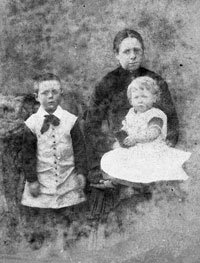
Frances with George and Archie at Weymouth
Elm Road New Malden
Because his uncle and aunt had lived in New Malden for the past 16 years, Jack must have visited it often and decided it would be a better place to bring up a family. Was it a higher paid job that enabled him to be a commuter? They moved to South View Villas, Elm Road, a central one of 10 cottages facing the school.
Their three youngest were born there; Philip Charles in 1884, Donald Oscar in 1887, (named possibly after Uncle Oscar who was ill and died 5 months later) and Robert Cecil born in 1889.
In a letter written to his children Jack reminds them of the neighbour’s fireworks they watched in 1889. Later Jack would recall days with the boys spent at the zoo, Madam Tussauds, a pantomime in Drury Lane and “ best of all lying on the sands at some English watering place watching the little beggars paddling about”
Above right: South View Villas
Right: Jack and Frances with 4 of their sons.

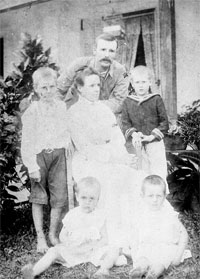


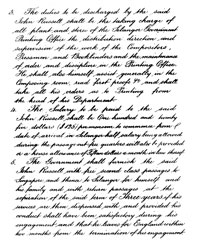



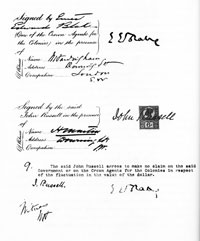
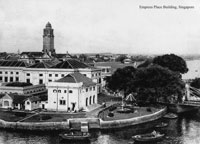
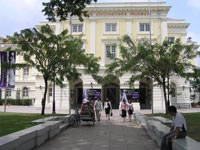
Jack was called "Fuzzy" because he was fussy; he disliked disorder and insisted on good behaviour from his children. The Captain of the ship that took them to Malaya congratulated him on their good behaviour.
On Saturday 22 March the family left for Klang on the steamship Sappho. The voyage took 24 hours. Then they took the train to Kuala Lumpur.
They moved into a rented bungalow, which had previously been occupied, by the European gaoler and his family. They joined a community of about 81.000 people; about 125 of whom were European. The directory for the year lists only 38 European women in the whole of Selangor.
A week after his arrival John was directed to return to Singapore: “I have the honour to inform you that I have directed Mr. J. Russell to proceed to Singapore in order that he may visit the Govt. Printing Office and get all necessary information from which to order racks, desks fittings, etc. necessary for a printing office. I have also desired him to select if possible competent persons to fill the offices enumerated in the Estimates for 1890 under the head of Printing Office Establishment.”William Maxwell to Colonial Secretary in Singapore, (quoted in Clague page 85)
The four oldest children were sent to a small private school run by Mrs Hurth, the wife of a leading coffee planter.
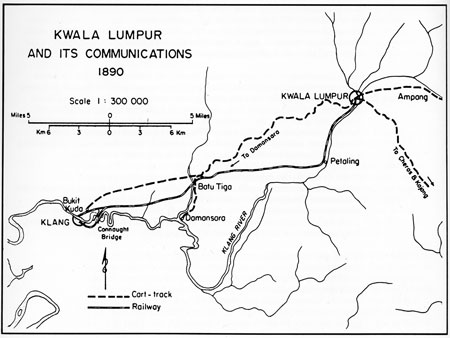
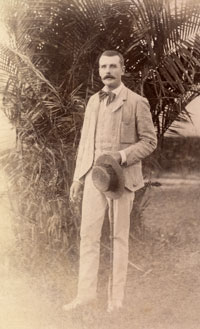
From Maxwell the British resident’s Annual Report 1890:
“PRINTING
Up to the end of 1889 the printing work of the State had been very satisfactorily carried out by The Singapore and Straits printing office, Singapore (Messer’s Fraser and Neave), but in view of the increasing requirements of the State, of the delay and expenses consequent on communication with Singapore and of the decision (with the concurrence of HE the Governor) to issue a Government gazette from the beginning of 1890, it became necessary to organise a government printing office at Kwala Lumpur.
A suitable building has accordingly been erected. The Government printer (Mr John Russell) arrived in the State in March, but it was not until June that the office was sufficiently advanced to allow of the erection of the plant. The Government gazette of the 27th June was printed in Selangor.
The demands of the printing Office during the first year of its existence have necessarily been heavy and unfortunately the supply of type ordered in the first instance proved altogether insufficient. At one time, the first portion of the Gazette had to be broken up after coming off the machine in order that the latter portion might be completed. When the estimates were printed in October, it was found possible to print only four fresh pages at a time. The type was then distributed and 4 fresh pages set up. Working, however under these and other disadvantages, Mr. Russell has succeeded in meeting the ordinary requirements of Departments as regards the printing of forms, ruled books with printed headings, circulars, notices etc.
During the year the office was improved and properly fitted up and fresh orders were sent home for type, machinery and paper. The Government Gazette has proved a most useful publication, it is excellently printed, and has appeared with commendable regularity.”
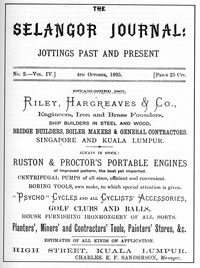
The family left for Kuala Lumpur on 12th February 1890 on the steam ship Glengarry. George was 10, Archie 9, Phil 5, Don 2 and Bob 5 months. In K. L. William Maxwell, the British Resident, sent a memo to the head of the Public Works department on 27 February asking him if he had rented the family temporary quarters, and what progress had been made with the new printing office. On the 10 March he asked that the family be given the Gaolers quarters for few months. There was no hotel in K. L. The Russell's arrived in Singapore on 15 March and were put up at Barganny Lodge in Eber Road. As they arrived they would have seen the government offices in Empress Place.
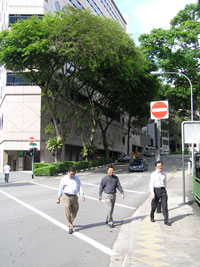
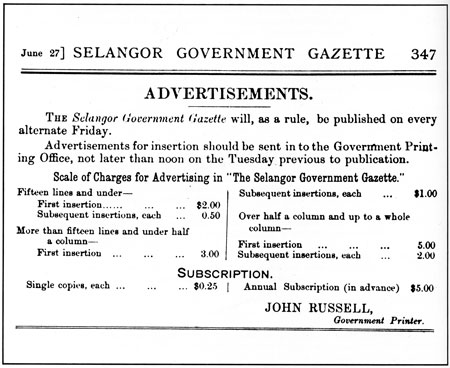
The first Gazette was published three months later on 27th June 1890.
Public Works Department Report for 1890
“PRINTING OFFICE- A printing office has also been built under contact with Messrs Gordon and Cargill, but not entirely satisfactorily, chiefly owing to the necessity of starting the printing as soon as quickly as possible, and having the building occupied.
Several additions such as enclosing the verandas have been done since completion. The cost of the building was $4,170. The building is of brickwork throughout with tiled roof and cement floor, and was designed for the addition of an upper floor.”

On 16th February 1891 John Russell’s application to become a freemason was approved and he was initiated into Read Lodge. The first Masonic lodge had been established in K.L. in 1889. Mr. Dishman, the Government Printer in Perak, who had worked with Jack at the Illustrated London News, may have told him about his predecessor Mr. Francis Nonis, who had died in service in September 1886, leaving a wife and nine children destitute. Although Nonis had worked for the Government for 23 years it did not provide a pension for his family if he died in service. The Masons had a reputation for helping the families of their deceased members.
At the end of 1891 the Russells moved to new quarters closer to the printing office. John's report of 1891 was mentioned in the news in August 1892: "The report of the Government Printing office shows that the cost had been $11,306 and the receipts $868. 133 numbers of the Gazette were issued. The heading “Notes” has been seldom used, but Mr. Russell suggests that short papers relating to the State of a nature both useful and interesting might be published in each issue. Mr. Russell employs half a dozen convicts as unskilled labourers."
This indicates John's interest in reporting on the local news. It was not allowed in the Gazette but a new publication was created.
The Selangor Journal
Clague suggests that it was Ernest Birch, when he was acting British Resident for eight months in 1892, who decided the government should sponsor The Selangor Journal. Jack was upset by Birch's death in 1929, so it appears that they became friends. The Journal was to be issued in alternate weeks to the Gazette. A committee of three government officers would be responsible for the publication: Dr. Travers, the surgeon, W. W. Skeat a district officer and John Russell would be the editor. It was intended to be self-supporting through advertising and subscriptions.
The Selangor Journal: Jottings Past and Present was first published on Friday 23 September 1892 and cost 25 cents. From 2 December 1892 in the 6th issue John Russell began to sign his articles with the name:” The Caxtonian” Dr. Travers signed his articles "Harley."
By the end of 1892 it was decided to send George the oldest boy to Raffles school in Singapore.
On 10th of January 1893 Francis with George and Robert the youngest travelled to Singapore to enrol him at Raffles based at St Andrews House in Armenian Street. They stayed at Barganny Lodge.
It might have been then that these two photographs on the right were taken.
On the afternoon of Sunday 15th January, Francis and Bob joined a group to visit the MacRitchie Reservoir, which lay in hills off the Thompson Road.
The following day Monday 16th January the Singapore Free Press reported what happened next:
“ A serious carriage accident occurred last evening by which a lady and her infant son were severely injured. A party of ladies and gentlemen after having been on a visit to the Impounding Reservoir, were on the return journey about 6 ‘o clock when one of the horses bolted and one of the occupants a lady named Mrs. Russell, from Kuala Lumpur, in her alarm jumped from the vehicle with her infant son in her arms, the result being that both are now suffering from concussion of the brain. The runaway horse stopped immediately on reaching the next carriage in front, and fortunately no further accident occurred. It is expected that the infant, not being very seriously hurt will speedily recover, but the case of Mrs. Russell is reported to be much more grave”
Frances died aged 34 on Tuesday morning at Barganny Lodge without regaining consciousness. Jack left for Singapore on 17th.
The Straits Times of Wednesday 18th January printed this report:
“A sad accident occurred on Sunday Afternoon which terminated in the death of Mrs. Russell, yesterday. Mrs. Russell, who is the wife of the Government printer at Selangor, came to Singapore in order to make arrangements for the schooling of two of her children. She went out for a drive to the Waterworks, Thomson Rd on Sunday afternoon, with her infant son, and on returning, the horse bolted. It is said that Mrs. Russell with her infant son leaped from the carriage, and both were rendered unconscious. They were taken to Barganny Lodge where Mrs. Russell was staying, and professional advice was called in which showed that both lady and child were suffering from concussion of the brain. The infant apparently recovered, but Mrs. Russell died yesterday morning. The husband was at once telegraphed for; and the last rites were deferred…so that Mr Russell might possibly have the opportunity to be present”
She was buried at the Christian Cemetery, Bukit Timah road Singapore on Thursday 19th January. (3)

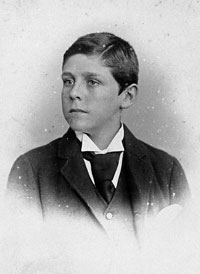
George remained at school in Singapore, Jack returned to K.L. with Robert on 23rd January. Eight days after his return from Singapore Jack sent a telegram to the government secretary.
Govt. printing office, Kuala Lumpur. Sir,
I have the honour to ask that the following application may be laid before the Resident. The recent death of my wife renders it necessary that a portion of my family should return to Europe, and I would ask that the passage of my four younger children be defrayed by Government – they are aged, respectively, three, five, eight and ten years.
2 I do not base this application on any precedent, but I hope that it may be regarded as an exceptional case: and I am fully aware that it was only in the event of my resigning my appointment at the termination of my agreement (which is dated 6th Jan., 1890) that the Government agreed to pay the return passage to England of myself and my family, but under the circumstances I venture to hope that my application may receive favourable consideration.
I have the honour to be Sir, Your most obdt. srvt. John Russell Govt. Printer
Government Printing Office, Kuala Lumpur, 13 May 1893. Subject: Govt. Printer reports vacating his quarters for Mr. Vane to occupy. Sir, I have the honour to inform you that I have handed over the keys of my quarters in the P.W.D., in order that Mr. Vane may occupy them. 2. May I ask, in view of my again wanting a house, that it be placed on record that the fact my obliging Mr. Vane does not nullify the order given in K. L. 8545-92, where those quarters are set apart for the Govt. Printer. I have the honour to be Sir, Your most obt. servant J. Russell, Govt. Printer.
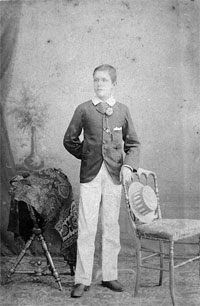
In the summer of 1893 the 4 boys were sent back sent back to England to live with Frances' sister Nell and her husband George Oxer and their two children in Peckham.
Jack left his large house and moved in with his friend Charles Paxon. They were both members of Read Lodge and the Selangor Club.
The family communicated by letters for the next five years, until April 1898
Jack's letters to his children are here.
Right: Phillip, Don, Archie and Bob in Peckham.
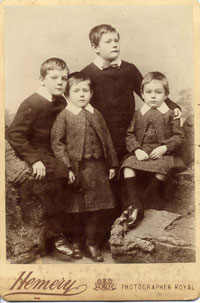
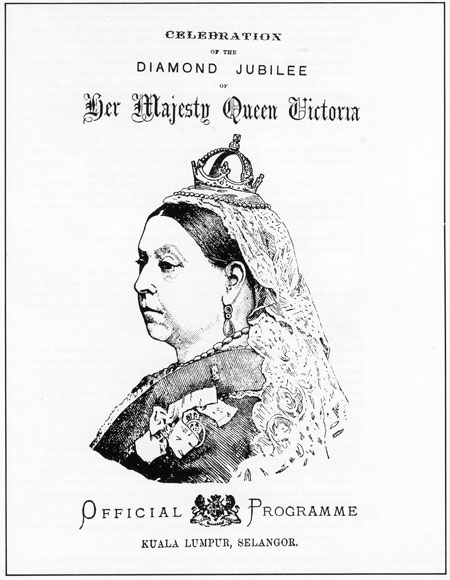

Jack took one year's home leave from April 1898.
Left: Undated photo. taken in London by the London Stereoscopic and Photographic Company, 54 Cheapside EC. The Company were at this address using this title from 1859 - 1907.
Perhaps Jack on his first return home spent some money on new warm clothes and a top hat and celebrated this with a photograph?

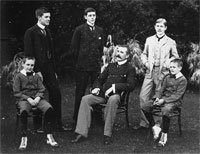


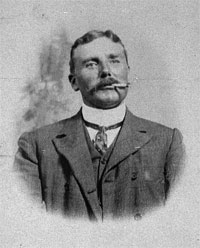
After he had returned to England he can be found living with Archibald (47) and Emily (36) Rough and 2 of their 3 children, daughter Cecil (15) and son Archie (6) at Grasmere, 37 Chestnut Grove on the night of the 1911 census.
Perhaps that’s when these pictures were taken.
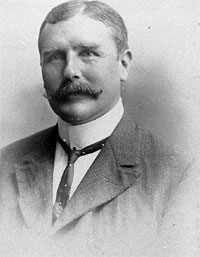
Promotion. The Straits Times of 17 May 1904 reported that "The Government Printing Office will soon undergo considerable changes and a thorough overhauling, owing to the amalgamation with the Perak printing department. The building will also be considerably extended." The Straits Times of 17 June 1904 reported the " Perak and Selangor Printing offices are to be amalgamated into one Federal establishment. In the event of this federation, in all probability Mr. J. Russell, Government Printer, Selangor, will be given the Federal appointment. Mr. S E Williams, Government Printer, Perak, has been offered the appointment of Superintendent, Government Printing Office, Singapore. A later Straits Times suggests that the " Mr S.E. Williams, The Government Printer at Perak, retired on a superannuation allowance of $1,050 per annum, long before the age limit owing to continual ill health. It was only after his retirement that the printing office and staff were transferred to Kuala Lumpur and a Federal Printing Department formed." Clague says it was on 1 July 1904 that Jack was appointed Federal Superintendent of Printing for the Federated Malay States a promotion, which gave him an extra allowance of £120 per year. The Printing Office was extended again in 1907 according to the Straits Times of 27 August.
Also in 1904 George became general manager of The Federated Engineering Company, Archie set up on his own as a miner calling his company: Chop " Tai Ying". From 1904 to 1906 Phil worked in Malta constructing the breakwaters and viaduct at Ricasoli Point and St Elmo Point. From 1905 to 1909 Don studied at the Colorado School of Mines. In 1906 Bob returned to K. L. and was taken on by Archie as his assistant and Phil returned and began to work as a civil engineer for Loke Yew. Also in 1906 the printing department was mechanised was a gas engine. The Malay Mail covering celebrations for the King's Birthday parade on 10 November, included in its list of guests: Mr. J. Russell, Mr. G. D. Russell, Mr. J. A. Russell, & Mr. P. Russell. By 1907 the family is regularly in the news, Phil had travelled round the world with Loke Yew, George was well known for his automobile expertise;and both Bob and George were playing in polo matches. In 1908 George had completed the construction of the River Klang Road bridge, and in 1909 went home to marry his cousin Madeleine Mossop.
Jack took some home leave in 1909 possibly for George’s wedding. In the end Jack refused to attend it because the Roughs had not been invited, so does not appear in the formal wedding photograph. He returned to work on October 1909.
1909 The Shabeen
Jack and the younger boys moved into the Shabeen a house with a large garden overlooking the K. L. racecourse. He wrote Emily Rough a post card about it.
"Our bungalow (The Shabeen) view from the garden. Lawn to the left intended for tennis: come join us. Left hand upstairs veranda early morning tea; that on the right afternoon tea. This imposing structure, in addition to the hall, veranda bathrooms etc. has but 5 rooms: 3 bedrooms upstairs, one downstairs and a dining room. The place is very prettily situated, and the prospect from the veranda lovely; so much so that the last two Sundays have seen me there all day! Two or three evenings I have not gone into town. We have to keep two gardeners, so much grass and so many flowerbeds. We are gradually getting things shipshape, and shall be fairly tidy by the time G and M pay us their first visit. We expect them early next week. Yrs Jack."


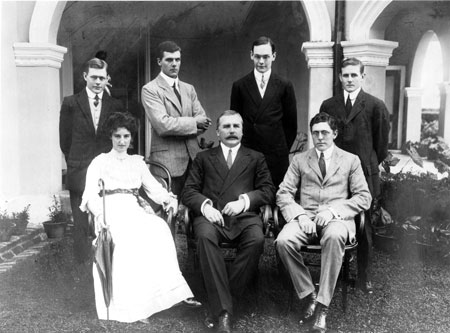
Left: Jack and the boys outside The Shabeen in 1909 with George's wife Madeleine.
A rare group photograph with the whole family together. By now Archie had an office at 10, Old Market Square and was working as a "Miner, Contractor and Land Agent", with Bob as his assistant. Archie has just had a Sunbeam car delivered to him. Phil had been working for Loke Yew, but he and Archie have just won the contract to build the Kuala Lumpur Station Hotel. Phil is also the agent for Swan and McLaren. George is Manager and Director of the Federated Engineering Company with about 22 staff. Don will start as a mining assistant for Archie.
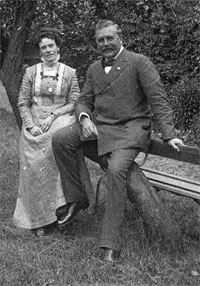
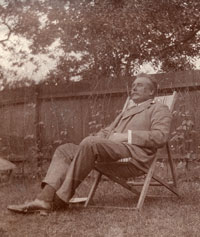
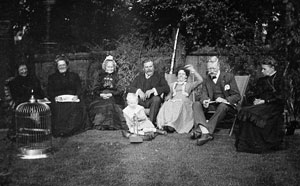
Retirement
Little is known about his retirement' years from 1911 until his death in 1930.
His son Phillip married in London in 1914. The Rough sisters report that after the wedding Jack took a lady out to supper and arrived home telling them “I’ve lost her- I don’t know where I left her” His half sister Annie died in 1916, and Emily Rough died in November 1921. His son Philip died of T. B. in December 1921.
Agnes and Cecil recall that he was a big drinker, a bottle of scotch a day, he was very jolly. They said he would boast of drinking a bottle of whiskey a day since the age of 30. The whiskey was sent for from Berry Brothers of St James. 12 bottles cost 48 shillings. The piano tuner and the organ grinder were always given a whiskey and soda. They quoted him as saying, “ When Fanny died I had to get married again or go on the bottle - the bottle won”. He would visit the Red Lion in Guildford frequently. He always went on the top of the bus because he enjoyed the view. Phil used to argue with him about his drinking. Jack seems to have had a strong constitution. He was six feet tall and boasted that he never lost any of his teeth.


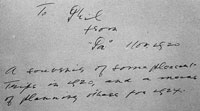

1921 Just after his son Phillip's death
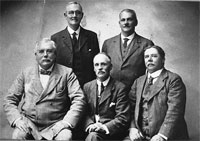
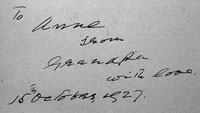
This group was taken in Bath. Were they Masons, or ex colleagues from Malaya?
Jack lived in 8, Old Palace Lane Richmond with a marvellous housekeeper called Mrs. Wicks. Archie then bought him a house in Wimbledon. (5, Courthope Road, Merton.) His cousin Dolly Godwin was in and out of the house and finally she moved in with him.
The Roughs described the poor Godwins as being a bit helpless. Dolly was said to never do anything right and be a very poor cook. She once made coconut ice for the Rough's dog. She had no style and a funny figure; no dress sense, according to the Rough sisters. Apparently Archie took her shopping for clothes “ it was an agonising morning”. He then sent her to his tailor and she had 3 beautifully tailored suits made. Then, commented the Roughs, “she looked tidy”.
Dolly used to drive her little car with Jack in the back because he was so big. She used to talk to him all the time and Agnes and Cecil considered it a miracle that she never had an accident.
Their housekeeper went out one night and didn’t come back. She had fallen off a bus. Apparently Jack and Dolly found this very funny and shrieked with laughter.
They look very content in the photograph below.
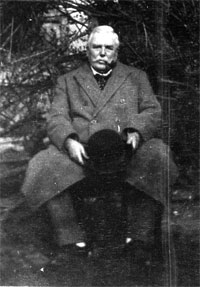
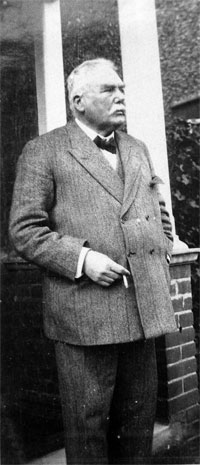
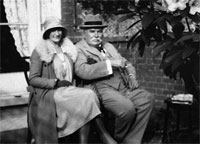
He wrote his will on 13 October 1930 leaving £1811 19s 1d. It was witnessed by Ellin Elizabeth Swain the maid at 5, Courthope Road Wimbledon, and Charles Hill, a builder of 26 West Place Wimbledon Common. It reads “I give all my estate and effects whatsoever to my son John Archibald Russell whom I appoint sole executor” It is signed in a very shaky hand.
He died on 17 Dec 1930 aged 75. Archie wrote a long letter to Bob about their father’s death.
"106, Fenchurch Street London
18 December 1930
My dear Bob, I have just cabled you the news of poor fathers passing away last night. He got ill on Friday night and I went down on Saturday morning and had lunch with him, but his mind was wandering at times. I went back on Sunday morning and stayed until midnight, when he seemed to have dropped off to sleep, as I got ready to drive home. He had however; a very restless night and Dolly could not keep him in bed, so on Monday when George arrived we got a male nurse to come down for that night. George unfortunately had to leave early to go to Scotland.
On Tuesday morning I engaged a day male nurse as well, and I stayed on at Wimbledon. Ethel was over all day, but I persuaded her to go back at midnight to Epsom and to come back again early on Wednesday morning. He was very gentle and patient, and although he wandered in his mind most of the time, he frequently had periods when he was quite lucid; but his speech was thick and difficult to follow.
On Wednesday, that is last night, Ethel also stayed the night; but the poor dear old man passed away at 11.45 pm. He was very peaceful at the end and just seemed to drop off to sleep. He had been conscious for about half an hour at 5.30 in the afternoon and he recognised Dolly, Ethel and myself and smiled at us and murmured our names. He spoke a good deal to us but we could not catch what he was saying. I think however that he was apologising to us for being a nuisance. He held our hands tightly. Although his breathing was so difficult and he was so restless the doctor assured us that he only felt discomfort and no pain. Just towards the end he was quite calm. The cause of death was anaemia due to failure of the kidneys. He died on the anniversary of Birch’s death, which had upset him rather at the time. After his death he looked so peaceful and handsome, quite 20 years younger, with all the lines and wrinkles smoothed from his face and all the over colouring gone.
We are burying him at East Sheen Cemetery on Monday. It is a very pretty cemetery and he had expressed a wish to be laid there when his time came. When he got ill I told him that I would cancel my passage and I did so on Monday morning. I shall now have to come out by the Markunde? Leaving Marseilles on 16th January and coming on by Athos II ) mess agencies? Maritime from Colombo or by the Rawalpindie from Marseilles on 30th Jan. I suppose that you had better inform the Masonic Lodge of father’s death
I think that it was father's wish to go as he did. His sight was rapidly failing him and he feared going blind. He also feared having a stroke, or lingering on in a helpless condition. He said he had had on the whole a full and happy life and was prepared to leave.
He was a wonderful man, the kindest most considerate, brave and honest man I have ever known. He also had a very fine intellect, and, in his younger days was a wonderful worker. But he had no personal ambition apart from pride in his work, and no desire for personal advancement. His generosity was astonishing and only equalled by his sense of honour. I think he was the finest father in the world and I believe he must have been a good and devoted husband. He left a long lock of mother’s hair to be buried with him. It was a beautiful golden brown. It is hard to understand that we shall not see him in this world again. He was such a lovable man. I think that anybody who ever knew him well must have loved him. God rest his dear soul.
Yours with love, Archie."
His death was recorded in the Malay Mail of 19th December 1930
“A cable has been received this morning In Kuala Lumpur announcing the death of Mr. John Russell who was for many years in Government service here. The news of his death will be received with much regret by his old friends in Selangor, and the sympathy of all will go out to his sons, who are closely identified with the commercial and business life of British Malaya.
Mr. John Russell was well on in his seventies and had been ailing for some time, but the latest news was reassuring. A member of our staff had the pleasure of meeting Mr. John Russell at Richmond in the summer and found him still keenly interested in Malayan affairs. He was an extremely industrious and capable man. He produced the first magazine to be published in Kuala Lumpur. It was called the Selangor Journal. He also played his part in the social life of his town and was for a long time on the committee of the Selangor Club. Soon after his arrival in the country, he had the misfortune to lose his wife in a carriage accident, and on his shoulders alone fell the task of bringing up a family of 5 sons, who with one exception survived him. It must have been a source of great satisfaction to him that they all made good positions for themselves. He was a fine man and good father”
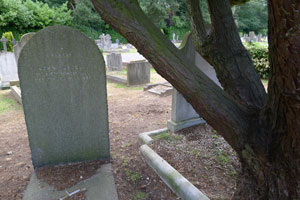

A sketch about John written in the Malay Mail by Mr. J. H. M. Robson pointed out how underused Jack had been. “In the case of the late Mr. John Russell the State had the chance of utilising the services of a man who, coming here as Superintendent of the newly opened Government printing department was obviously fitted to undertake more important administrative work. Unfortunately Mr. Russell was very good at his particular work and equally unfortunately for the State, he happened to be one of those people who never think of blowing their own trumpets or asking for promotion. A man of great industry, with a strong sense of duty, backed by unlimited common sense, his services would have been extremely valuable in any appointment open to other than cadets. I feel sure that if he had remained here long enough William Maxwell would have had Russell out of the printing office and in some more responsible appointment – but fate willed it otherwise.”
He is buried at East Sheen Cemetery on the right near the Sheen Road entrance gates, the second grave on the left in section B. A solid and plain grave probably chosen by his son Archie.
Photographed by Claire Grey on 11 August 2013.
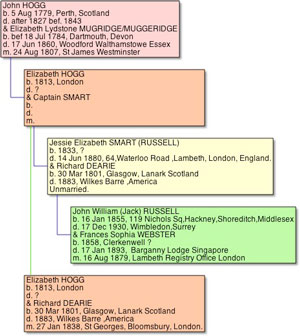
Agnes and Cecil said it was their father Archie Rough who helped Jack get his job in Malaya. They also said that Frederick Benjamin Montague in Cyprus, who lived in New Malden, persuaded Fuzzy to go to Singapore. Agnes and Cecil reported, “Montague would have been governor but was made a scapegoat and sent home”( Frederick appears to have become a clerk in the Colonial audit department in Malta by 1910, when his daughter was married there; the Montague family are mentioned in one of Jack’s letters.) However it seems more likely that John Dishman, a fellow printer and compositor on the Illustrated London News suggested it. Dishman went to work for the Perak Government Printing Office at Taiping in 1887, having been chosen to go by Mr. Swettenham.
On the 6th January 1890 Jack signed a contract for the job of Foreman Printer for the State of Selangor in Malaya. His salary would be $125 per month and he would be provided with a government house. The contract was initially for three years, with passages paid for. However at this time all printing for Selangor had to be done in Singapore 200 miles away. There was no printing office in Kuala Lumpur and his job would include having to set it up.

In the government estimates for 1891, the salary of the Government printer was approved at $175 per month. The Chief Compositor was paid $45, four senior compositors $35, and two juniors $20 monthly. The senior ‘pressman’ who arranged the formes, paper and ink for the press received $25 per month and his two subordinates $18
Among several other junior appointments was that of ‘machine turner’ whose monthly pay was $15. It was his job to turn the handle of the press once printing began. This may be the "wheelman" listed in the directory entry. The office boy was paid $9 a month.
After provision had been made for the purchase of the machinery, stationary, type and other items, the total estimate of expenditure for the printing office in 1891 was $12,274
"The Government, I hear, have sanctioned a vote of $850 for the establishing of a local newspaper. Mr. Skeat, Dr. Travers and Mr. Russell are to be editors. Home and local politics are to be barred from its pages, and it is intended only to circulate news of local interest."
Singapore Free Press and Mercantile Advertiser, 5 August 1892, page 1
The Journal was received well by existing newspapers who used it for Selangor news. The Daily Advertiser reported its first issue, which included the aims of its authors:
"THE SELANGOR JOURNAL. We have to acknowledge with thanks the receipt of the first copy of this publication, dated 23rd September. The move is a laudable one, and we hope it will be attended with every success. The subscription is only $5 per annum, payable in advance. The following paragraph explains the object of the paper;- With this its initial number, “The Selangor Journal” makes a bow, so to speak, before the Public, and begs to give the reasons for its appearance. The records of the State, social and otherwise, are falling into oblivion, and unless some effort is made to preserve them it will become a difficult matter to make a reference to past events with any degree of accuracy. It is therefore necessary that something be done to prevent the history of Selangor getting beyond recall; not only as to what is occurring at the present time, but more especially as regards the past. I addition to this, there are many subjects connected with daily life in the State which would be none the worse for a little comment; but no convenient outlet for which has up to the present existed. To endeavour to meet these wants is the chief aim of “The Selangor Journal”: an account of matters of interest occurring in the State to-day will be attempted, and under the heading “Retrospective Notes” as much past history as can be gleaned from reliable sources will be given. A high standard of literary excellence must not be looked for, and subscribers must bear in mind the object of the project. Daily Advertiser 3 Oct 1892, page, 3
Frances' death appeared in the Selangor Journal on 10th February:
DEATHS:
RUSSELL- At Singapore on 17th January,
Frances Sophia aged 34, wife of John Russell
of Kuala Lumpur. Deeply regretted.
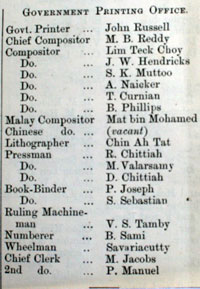
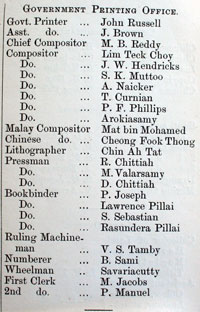
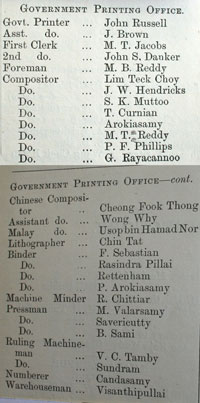
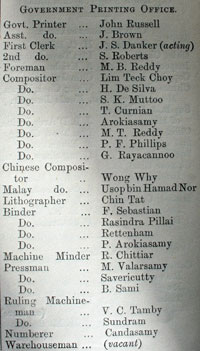
The Journal reported on meetings of both the Selengor Club and the Freemasons:
"The regular monthly meeting of the Committee of the Selangor Club was held on Wednesday, the 12th inst.; Mr. Ebden was in the chair, and Mr. Bligh, Secretary, and Messrs. Holmes, Paxon and Russell were present. Messrs. G. De Souza and K Trutwein were elected members of the Club, and among other business a revised tariff for drinks was framed, to come into force with October.
At the regular monthly meeting of Read Lodge, No. 2337, Kuala Lumpur, held on the 17th inst., Bro. Russell, S.W. was elected Master for the ensuing year, Bro. Lammers re-elected Treasurer, Bro C. Stewart re-elected Tyler, and Bros. Paxon and Day, Auditors. A supper was held after the closing of the Lodge. The date for the consecration of the new Masonic Hall is not definitely fixed; it will however be some time in October." The Journal quoted by the Daily Advertiser 25 Sept 1894 page 3. The foundation stone of the Hall had been laid in November 1893, a bottle was placed in a recess next to it which included the 3rd November 1893 copy of the Journal.
The foundation stone was laid for the new Government Buildings beside the Padang on 6 October 1894. In a ceremony with the Resident Mr. W. H. Treacher, the Governor of the Straits Settlements , Sir Charles Mitchell, was given an engraved silver trowel with an ivory handle and gold bands, by A. C. Norman the architect. "In a cavity below the foundation stone the Governor placed a yen, some Straits coins, a piece of Selangor tin from the Straits Trading Co. and a copy of the Selangor Journal. The stone was then lowered into place"
Straits Times 11 May 1958, p.12
SELANGOR LYONS NEW PATENT COFFEE PULPER. (From a Correspondent) On Monday, the 19th of October, Mr J. M. Lyon, of Singapore, exhibited his newly invented Liberian Coffee Pulper on Selangor Estate, Kuala Lumpur, before a very critical audience of planters and representatives of engineering firms. Amongst those present we noticed Mr. Carey, the Chairman and Mr Tom Gibson, the Hon Secretary of the SPA., Messrs Huttenbach, C. Meikle, R. Meikle, F. Toynbee, J. Toynbee, Hampshire, Nissen, Inch, Stephenson, Rodgers, Kindersley and Skinner; Mr. Shepherd, inspector of prime movers and engines; Mr. MacBean, Managing Director, and Mr. Swan, Manager of Howarth Erskine, Ltd.; Mr. Sanderson, Manager of Riley Hargreaves and Co., Mr Galbrieth of the Ledgerwood Manufacturing Co., Mr. Russell the editor of the Selangor Journal, etc .etc.
Singapore Free Press and Mercantile Advertiser 22 October 1896 page 2. Extract
The Selangor Journal 's final issue was published on 3 September 1897. It carried an article called “Valediction". The following are extracts quoted by Clague.
With this number Vol. V. the Selangor Journal comes to an end. The reasons for this, given shortly, are that the Malay Mail provides all that is necessary for the purposes of daily news by giving accounts of local importance and that the work of editing and conducting the paper is rather too great a tax upon the time of the one responsible for it. The Journal was started to supply a want, to fill a gap: we now have a regular daily press; the want and the gap no longer exist: ergo the Journal may cease.... Five years, in some ways, is but a very short time; yet in a place like Selangor, at this stage in its history, a lot of events of the first importance can be crowded into that space, and it has been our good fortune to be able to chronicle many of these... The Journal may in addition- in a very humble way of course- claim to have done something to make Selangor known outside the limits of the Straits; to, in fact, advertise the State: because apart from the many copies that that have been regularly sent to Europe direct from the office, many of our local subscribers, we know, have been in the habit of sending their copies to friends at home. That the items of news we have been able to give, the references to passing events and people, will form some sort of record is probable, for as each volume has been completed, so have a number of subscribers had copies bound. And now we must write “Goodbye!” and it is written with real regret, for, leaving out occasional anxiety, the work of editing has been the very happy task of our spare hours; but there are more reasons than one why the Selangor Journal should be allowed to cease while it is yet in its full strength and vigour.
The Straits Times of 6 September 1897 added Jack's final conclusion: “There must be many who think that the cost of issuing a publication so unpretentious as the Selangor Journal is nil, for at the present moment there is something like a sum of $500 outstanding on the five volumes. We shall be very glad to receive it, but we shall be agreeably surprised if we do- all of it,- that is. Without the slightest hesitation we shall make over all irrecoverable outstandings to a Society for the Propagation of the Gospel in Foreign Parts (more particularly the East) because we feel convinced that if a true Christian spirit were abroad there would not be so much owing to us. Among the many regrets we experience in closing the Journal, not the least is the sorrow we feel for those who, while not subscribing, have always managed to borrow it to read: to them, indeed, if to no others, its stoppage may prove a loss.”
On 28th Dec 1893, The British Resident, Mr. Treacher sent a minute to the Government Secretary, Selangor: " The Govt. Printer has done excellent work & hard work this year & for a considerable portion of the year was without an assistant. I understand there are considerable savings on the Estimates of the Department & from these savings $100 can now be paid to The Govt. printer. 28/12
Jack replied: I am exceedingly gratified at the good opinion the Resident has been pleased to express of my services, & am much obliged for the bonus. JR. 29.12

Left: Map of K. L. dated 1895. The old printing office, shown bottom left, was on Bluff Road. (Bukit Aman) In one of his letters, dated 1893, Jack wrote " the additions and alterations to my office are nearly completed.. and I am now writing this letter in my new room... it looks right into the garden of our old house.."
The new Government Printing Office, was built on the southern edge of the parade ground, later called the Padang, and now named Dataran Merdeka. Possibly designed by the government architect A.C. Norman. It replaced the old post office. Norman was Superintendent of Public Works between 1883 and 1903. He is said to be responsible for the Sultan Abdul Samad Building, St Mary's Church, The Selangor Club, The Victoria Institution and Carcosa. Peter Clague has the office opening in 1909, but Cheah Jin Seng in his book "Selangor, 300 early Postcards" says that contemporary annual reports and photographs put the date as 1899. A letter from Jack asking for cupboards and a wooden screen for his office door before he can move in is dated 30 October 1899. The building is now the Kuala Lumpur City Gallery, and the first floor is called the J. Russell Floor.
Jack's report for 1897, written in February 1898, showed that the expenditure of the printing office was $25,274.02, and the income $10,180.69. The report suggests that a new larger building will be ready next year:
“The Year was an exceedingly busy one, and the amount of work to be done was at times very difficult to cope with. More men and more machinery would have been of the greatest assistance but there was no room for either. In my reports for 1895 and 1896 I have referred to the need for more room. At the time of writing, an addition has been made of a temporary structure with an atap roof, and it is to be hoped that before this time next year the new Printing office- for the construction of which provision has been made in the 1898 estimates- will be occupied. When it is remembered how prolific of Enactments the year was, and that, with the exception of the work for Perak, all the native States printing, as well as a good proportion of the Federal work, is done in this office, it can easily be understood that this means a very large amount of work to turn out. The staff have worked well and hard throughout the year, and as in my former reports, I can speak very highly of Mr Brown’s services as Assistant printer".
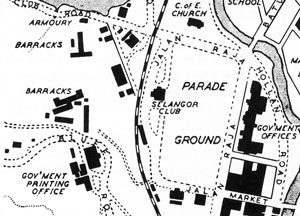
Jack was was elected Vice President of the Selangor Club in May 1900." The Selangor Club held its annual general meeting on Saturday. The yearly report showed a balance of assets over liabilities amounting to $7,045. Mr John Russell, the Government Printer was elected Vice President of the Club. Mr Huttenbach was appointed honorary secretary." Straits Times, 3 May 1900, page 2 . However by the following year Jack did not want to continue. " Selangor Club. AGM at K.L. Mr Belfield took the chair.... “ Mr Russell the Vice -President intimated his disinclination to carry on the work of Vice President for another year. He said he thought the Club wanted a gentleman for V.P. who was both a leader of society and a keen sportsman. Mr. Russell said that a gentleman well fitted for the post and one who had always taken an interest in the Club was Dr. Travers. A ballot was then taken and resulted as follows;- Mr. R. G. Watson 19 votes; Dr. Travers 19 votes. The President gave his casting vote in favour of Mr. Watson. The election of the new Committee resulted as follows: Dr Travers, Capt Ainslie, Messrs Bellamy, Hubback and Robson; Mr Joacquim and Mr. C. Meikle nominated by Government. Straits Times 2 May 1901 page 3.
In July 1902 Jack asked for permission from the British Resident for Archie to be allowed to take an examination in Chinese. Archie passed the exam in April 1903. This was considered so remarkable that the Straits Times ran a leader about it on 2nd July. By 1903 Phil Russell had completed his apprenticeship and found a job working for Pearson, constructing the London Underground. Jack took five months leave in England from 4 June to 3 November in the same year for "for urgent private affairs". Possibly this was to organise sending Bob and Don to school in Devon.
